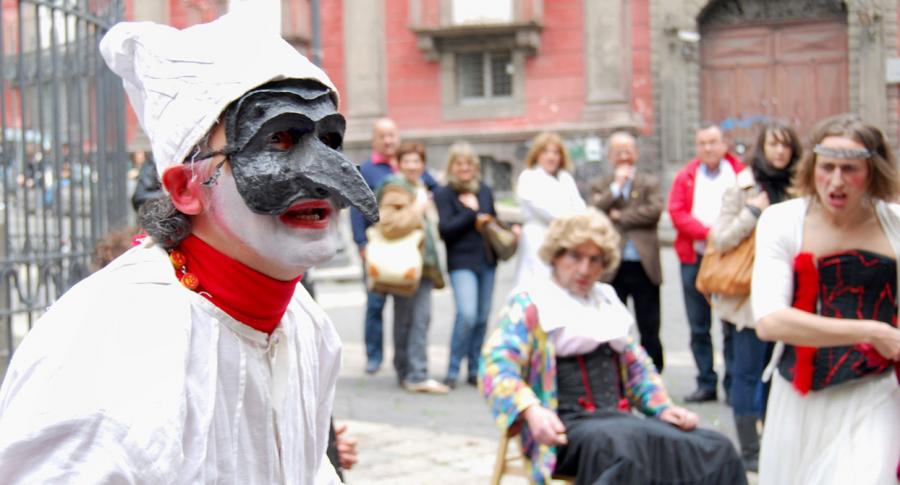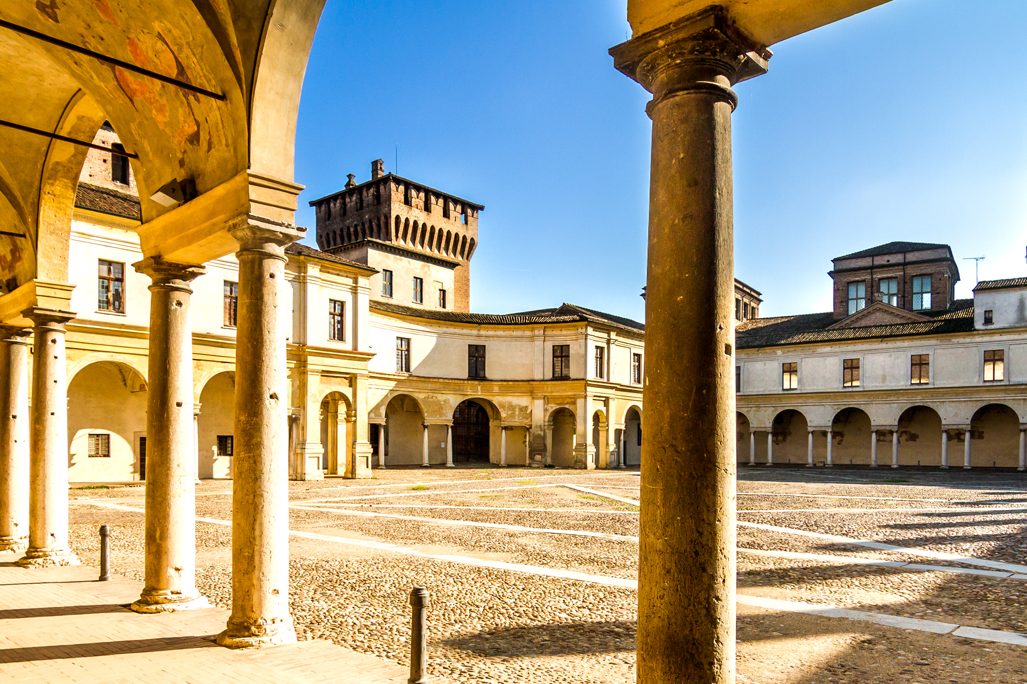Michelangelo’s paintings in the Sistine Chapel in the Vatican are without a doubt the most celebrated paintings in Italy. The Sistine Chapel takes its name from the pope who consecrated it, Pope Sixtus IV, on August 15, 1493. But it was Pope Julius II who later commissioned Michelangelo to paint the vault of the Chapel. The artist, a dutiful son, wrote thus in a letter to his father: “Today, May 10, 1508, I, Michelagniolo, sculptor, have received from His Holiness Pope Julius II five hundred florins as an advance for the painting that I shall begin today.” When he was finished, in early October 1512, Michelangelo wrote again to his father: “I have finished the work on the Chapel, and the Pope is well satisfied.” Thus we know the exact beginning and completion date of the masterpiece.
As we enter the Sistine Chapel we are awed by the height and distance of the vault, fifty to seventy feet high. In order to admire the vault one must look up throwing back one’s head as far as possible. Many years ago, before mass tourism, it was possible to lie down on the floor and look up at the vault for a length of time, possibly using binoculars. Now the huge number of visitors makes this manner of viewing impossible. In any case, one realizes immediately the painful discomfort the artist was subjected to during the long years he painted the chapel’s vault all by himself, way up there: “The agony and the ecstasy.”
The Sistine Chapel is not a beautiful architectural space. It has an extremely high rectangular shape, long and narrow. The Chapel is part and parcel of the Vatican Palace, and it has traditionally been used for the Conclaves to elect the popes. Several artists before Michelangelo had decorated the chapel, among whom we count Perugino, Botticelli and Ghirlandaio.
One might say that Pope Julius II took a gamble when he gave Michelangelo the arduous task of decorating the vault. Michelangelo was famous for his sculptures, not for his paintings. To add to this, the vault was to be frescoed, and fresco is a specialized painting technique in which Michelangelo had no experience at all. In fact, Michelangelo’s first historian, Condivi himself, wrote that Michelangelo was “poco pratico” ( had little experience) in this medium.
The high barrel vault of the Sistine Chapel has windows cut into the surface. Michelangelo decided to decorate it in an architectural manner, dividing the space into numerous sections. That is the reason why different groups of figures have different scales. Though asked to paint only religious subjects, Michelangelo took it upon himself to include in his paintings the Sibyls, characters from pagan antiquity, next to the prophets of the Bible. There are five Sibyls and seven prophets. The sections are linked and intertwined with garlands of oak leaves, in reverence to the commissioning pope, who belonged to the illustrious Della Rovere family, “rovere” meaning oak in Italian.
Initially Michelangelo was sent to Florence to look for four experienced collaborators, since the space to be decorated was enormous. But the artist was a loner who did not easily get along with people, so he soon literally locked his collaborators out of the chapel. From then on, he worked alone, with the help only of one lonely pigment grinder on the floor.

Michelangelo’s work was difficult, since he had to scrape off layers of the existing paint and work lying down on his back, face up. But the job itself was tough: fresco (meaning fresh) is a medium thus called because the color must be applied very quickly, while the plaster is still fresh, or wet. First, the wall must receive a ground coat of mortar and coarse sand, then a coat of white plaster smoothed down to receive the painting. When the painting dries, the pigments remain chemically bonded to the surface, and will remain there forever. The painter must work fast, and no revision is possible once the plaster is dry. The next day, he must renew the process with a new batch of plaster.
When Michelangelo started to paint the vault, he realized that his greatest problem was going to be the scaffolding. He did not like the solution that Bramante (the Pope’s architect) had adopted, that is, of having the scaffolding hanging from the vault. That would have left unsightly holes once the work was finished. Michelangelo had the holes patched up, and devised an ingenious way of sustaining the scaffolding by laying long planks across the cornices of the walls. That solution, however, left him only enough space that he had to paint flat on his back. Every day the artist had to overcome vertigo and ascend to his post with a perilously high ladder.
The ceiling is divided by five fictive cornices into nine compartments, in which stories from Genesis are represented. Michelangelo started with the scenes from the life of Noah: the drunkenness of Noah, the Great Flood, and Noah’s offering. Later, he painted the creation of Adam and Eve, the separation of the earth from the waters, the creation of the sun, the moon and the planets, and the separation of the light from darkness. All these paintings are of stunning beauty. For many years, I have had on the wall in my study a reproduction of perhaps the most iconic detail from the Creation of Adam, where God’s finger almost touches Adam’s finger, showing Michelangelo’s belief that man aspires to reach God.
Michelangelo’s frescoes in the Sistine Chapel were restored several times, and the most recent restoration was long and painstaking, lasting from 1980 to 1994. The chapel was subjected to a cleaning that was meant to bring to light the original bright colors. But some detractors have argued that the colors after the restoration were too bright for Michelangelo’s palette, and called them Benetton colors. Having visited the Sistine Chapel several times before the restoration, I myself prefer the frescoes before the restoration, as some detail was lost in the process of cleaning.
Many years later, Michelangelo was to be called back to Rome to execute another fresco in the same Sistine Chapel, but this time on a wall: the gigantic, awe-inspiring Last Judgement. I will write about it in my next article.
My advice to those of our readers planning a trip to Rome is to look online and start booking their entrance tickets well ahead of time. Do not underestimate the crowds! I might also suggest investing in a tour: tours are affordable and well worth the money, as they will give you more time and easier access.































